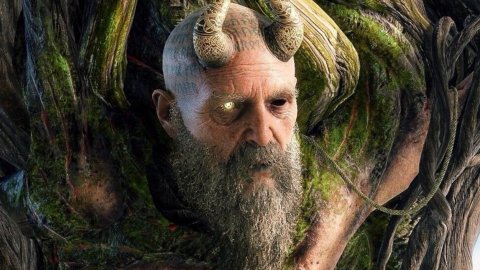God of War: discovering Mímir, the face of Norse wisdom

God of War
After going back to the origins of the myth with the special dedicated to Thor, let's go back to talking about Norse mythology, whose foundations give shape to the legendary adventure of Kratos and Atreus in the new narrative line created for the God of War saga.The protagonist of this appointment is Mímir, personification of wisdom whose head will return to dangle from the waist of the ghost of Sparta in God of War and its sequel, God of War Ragnarok.
The mythological origin
God of War Ragnarok: Mímir and his legendary horn, Gjallarhorn Unlike Thor, whose evemeristic origins identify him as one of the sons of King Priam of Troy, Mímir is a "born and raised" character in mythological panorama of the Germanic peoples. We find evidence of his deeds both in the poetic Edda and in the prose Edda, as well as in the Ynglingar Saga, the first part of the Heimskringla, written sources all signed (or, at least, so it is thought) by Snorri Sturluson.We know of Mímir that he is a giant (jötunn), guardian of the source of wisdom that takes his name (Mímisbrunnr). The latter is positioned under the second root of Yggdrasil, the world tree. His name could derive from the Proto-Indo-European verb which indicates the act of thinking or remembering (a root found in many other languages, ranging from Sanskrit, to ancient Greek, up to Gothic). Not only. It is almost certain that the English word "memory" comes from his name, linked to the memory capacity of the giant.
There are debates about the actual origin of Mímir. In fact, there are those who affirm that he is Bestla's brother, Odin's mother, and that therefore he is his maternal uncle, but the clues in this case are too few and jagged to be able to confirm with certainty the relationship.
For much of his existence he finds himself guarding the source of wisdom at the foot of the tree of life, from which he can freely draw (this is how he acquires knowledge) through the legendary Gjallarhorn, most likely the same horn that Heimdallr uses to warn the gods of the beginning of Ragnarök, as the latter drinks from the giant's fountain through this very object.
The story of Mímir
God of War Ragnarok : Mímir in his wooden prison Mímir is often mentioned in Snorri's writings. However, his "adventures" are limited; he is what today we would call a side character. The most relevant events that see him involved are two: the loss of Odin's left eye and the truce during the war between Æsir and Vanir.In the first case, Odin enters Jotunheim with the intention of drink from the source of Mímir. However, to do so, he finds himself forced to sacrifice his left eye. In the second case, Mímir is part of an exchange of hostages during the truce between Æsir and Vanir (protagonists of a fierce war that ended with the unification of the two pantheons). Convinced that they have been deceived, the Vanir behead the wise Mímir and send his head to Asgard. Here, Odin uses a mixture of herbs to preserve his friend's remains and, thanks to spells, is able to revive him. Thus, Mímir officially becomes (partly out of duty, partly out of necessity, since the lack of a body does not give him much choice) Odin's personal advisor.
Mímir in God of War
God of War Ragnarok: Mímir attached to Kratos 'belt In God of War we learned about Mímir as the constantly "pro-camera" talking head, as he remains attached to Kratos' belt for much of the adventure. , who carries it around as if it were a car radio accompanying the father / son duo during their exploits between the nine realms.In the Santa Monica Studio game the relationship between Odin and the wise head talking has been quite embittered, just to create a pantheon of gods cruel and suitable to become antagonists. Here, moreover, it is Kratos who cuts off the head of the "giant", imprisoned by the father of the gods, and it is Freya who infuses it with life again. The whole question of memory and knowledge has been handled in a fairly functional way, since it is Mímir who tells the story of the places that the player finds himself exploring during the game. In God of War he basically becomes a kind of tour guide, always at hand. As far as we have been able to see, in Ragnarok the character will be given substantially the same space, with that marked ironic and sarcastic attitude that manages to elicit a laugh between the various battles, but also to excite with the tales of distant and ancestral eras.
Have you noticed any errors?